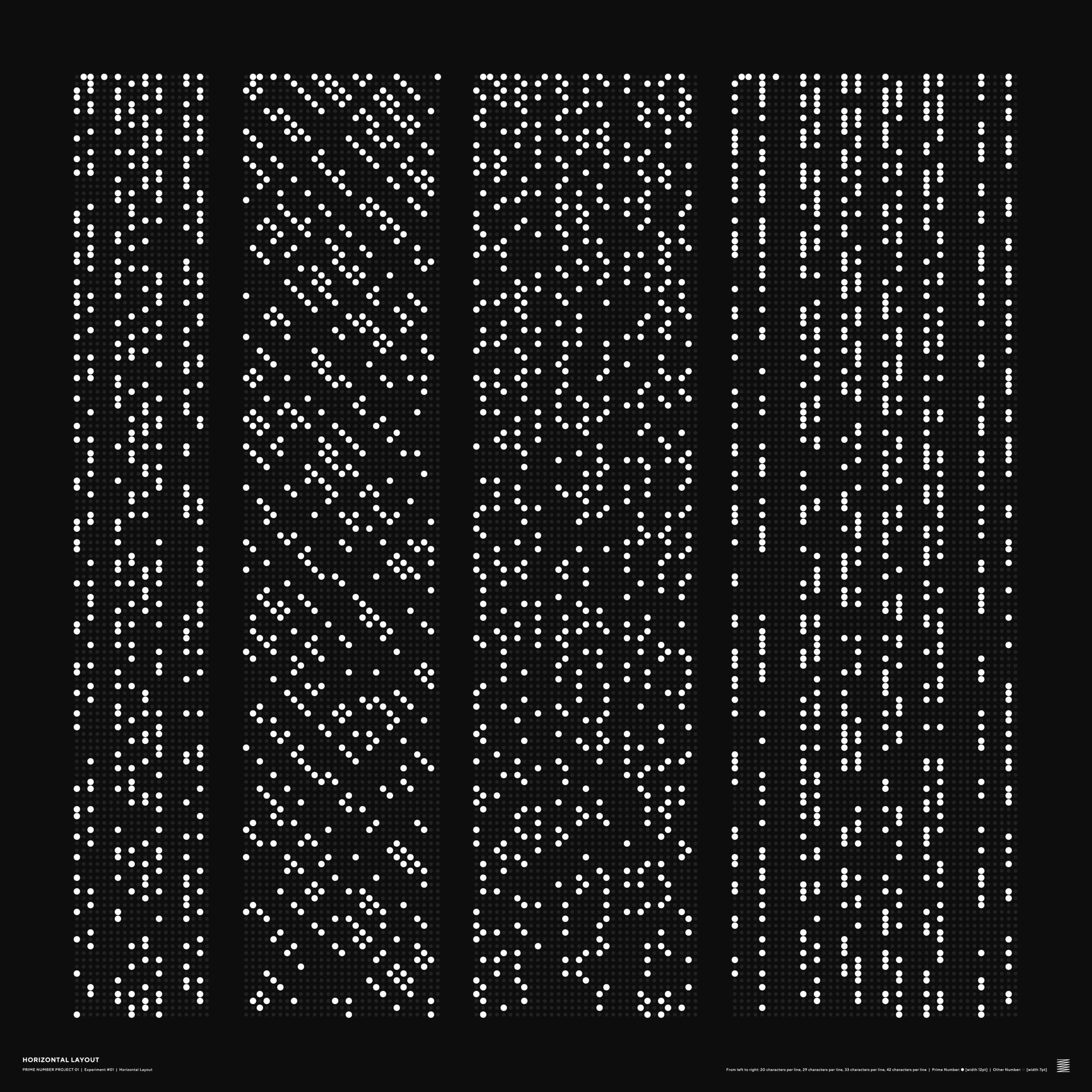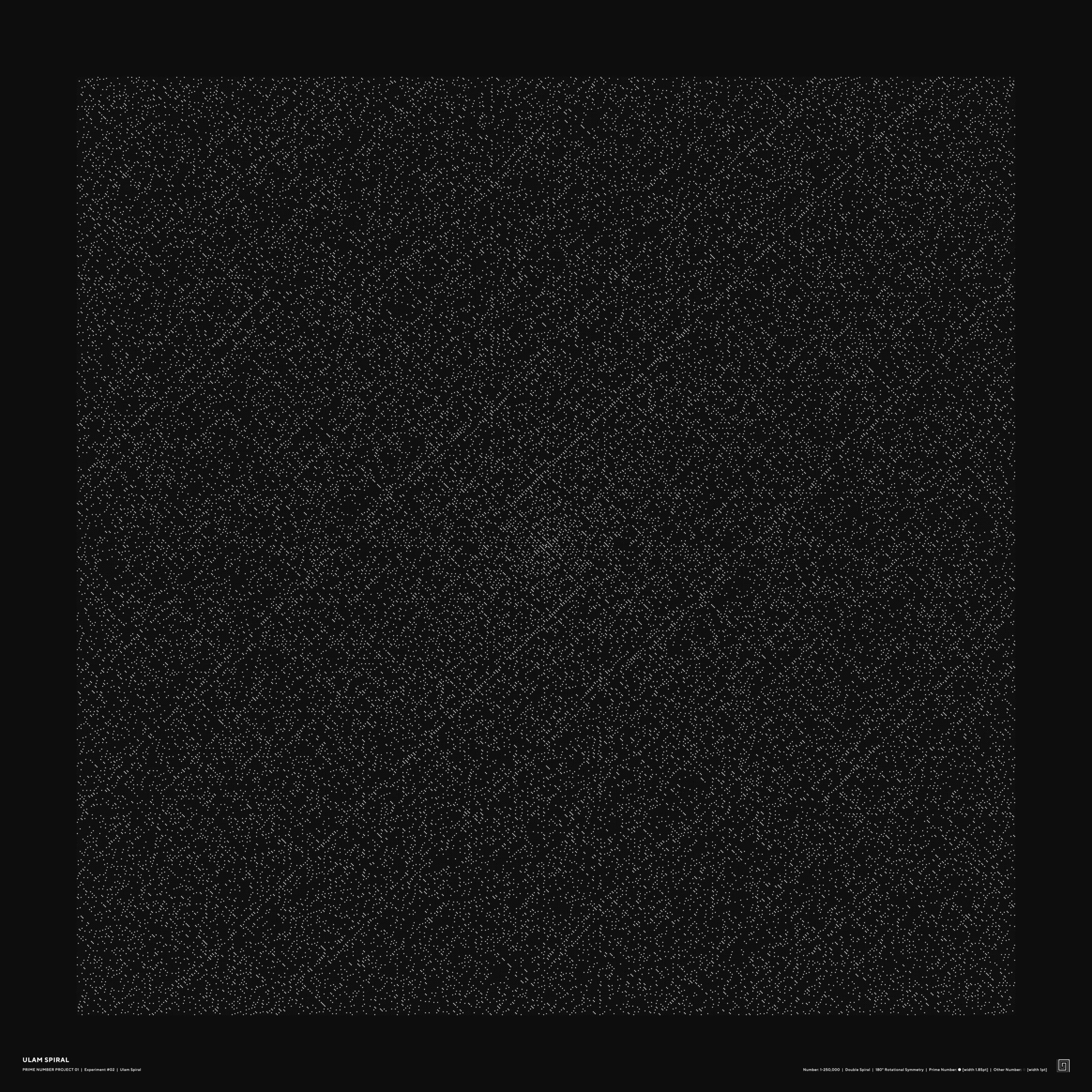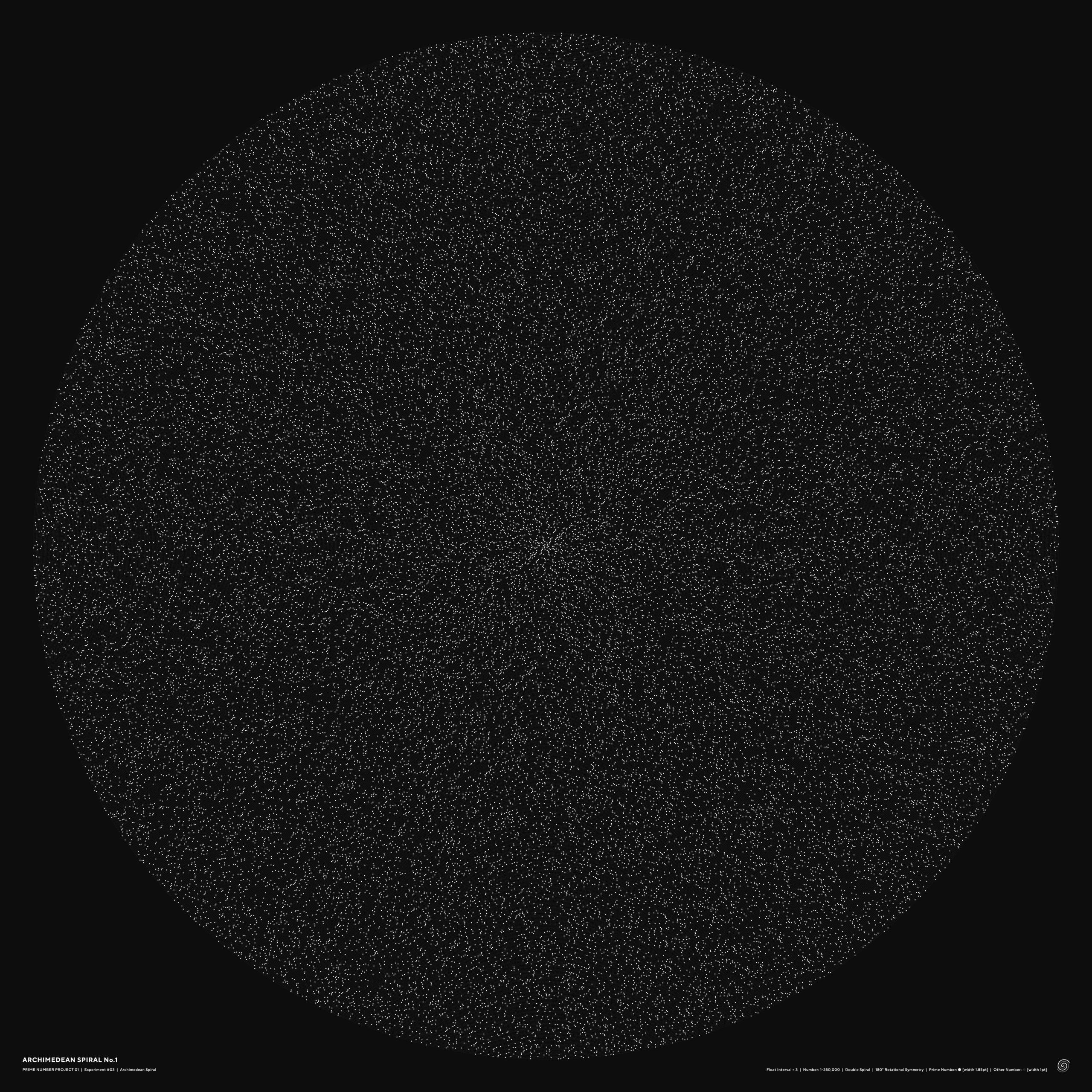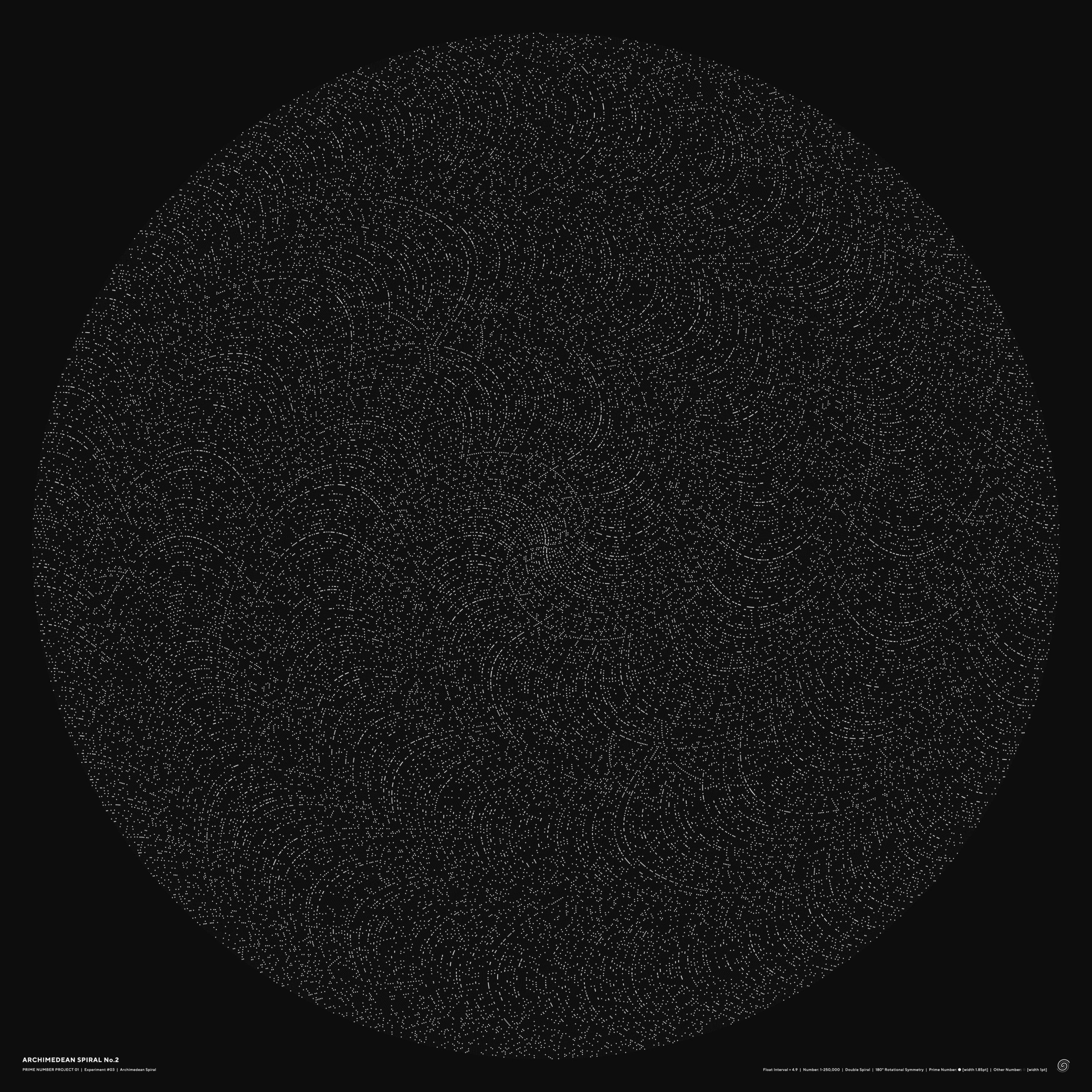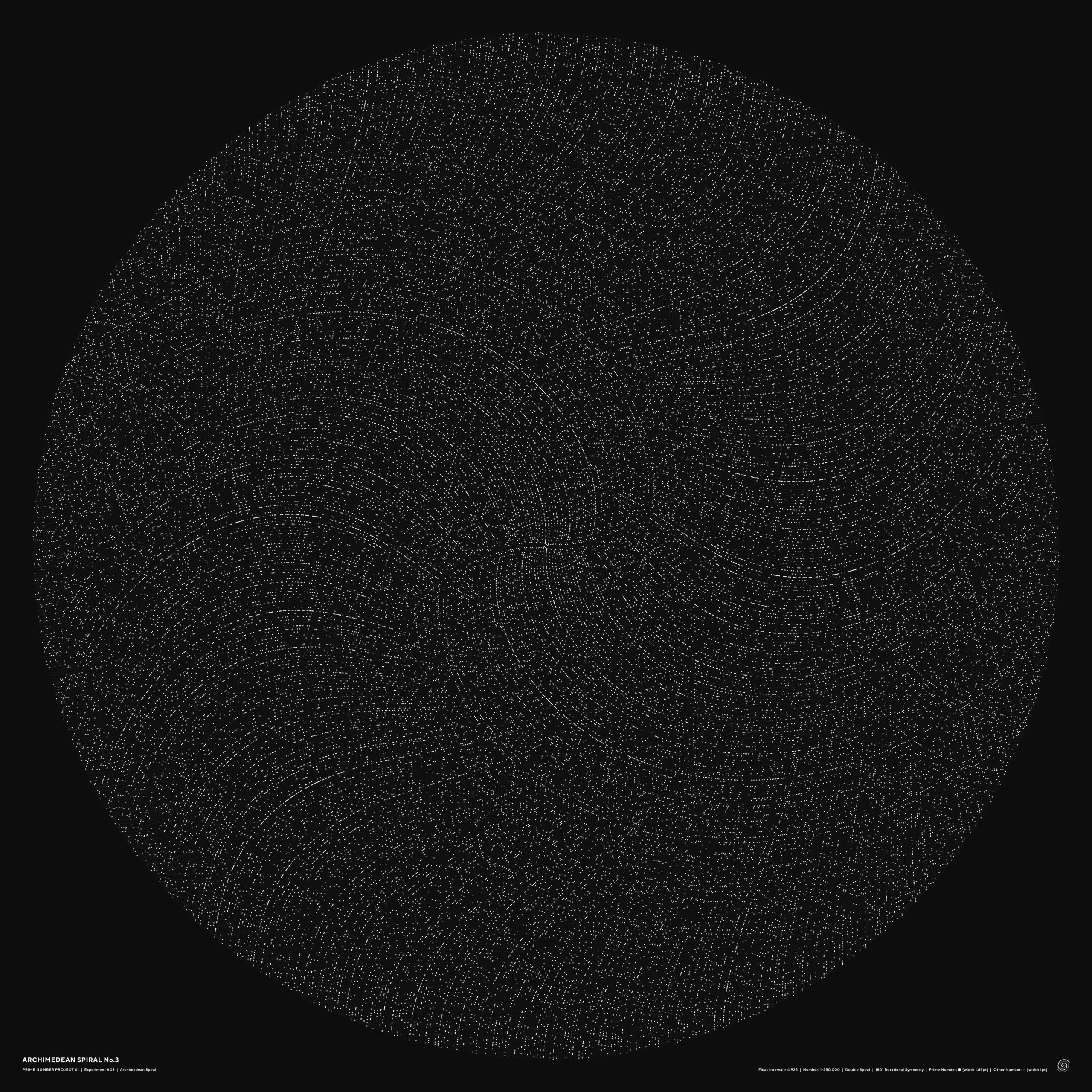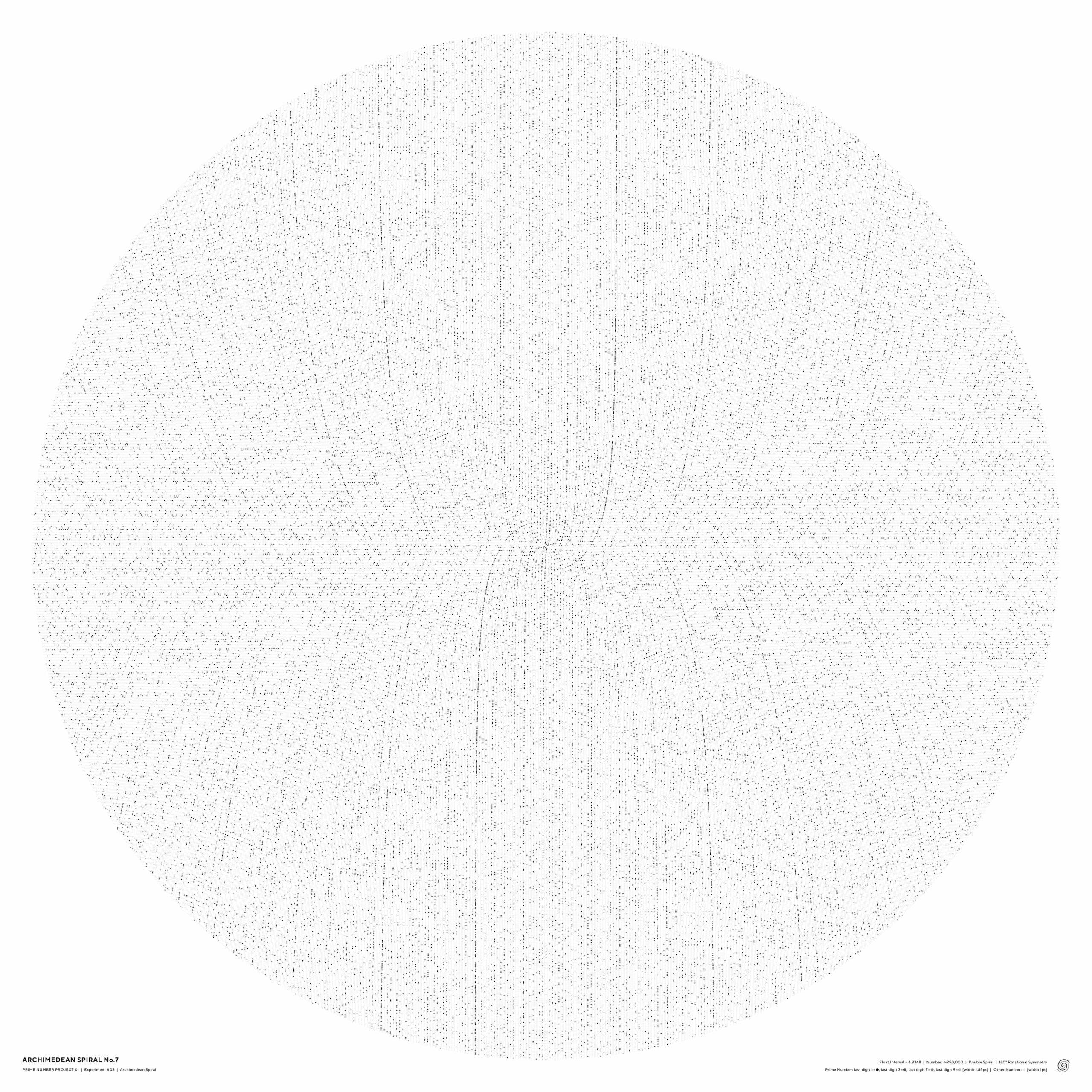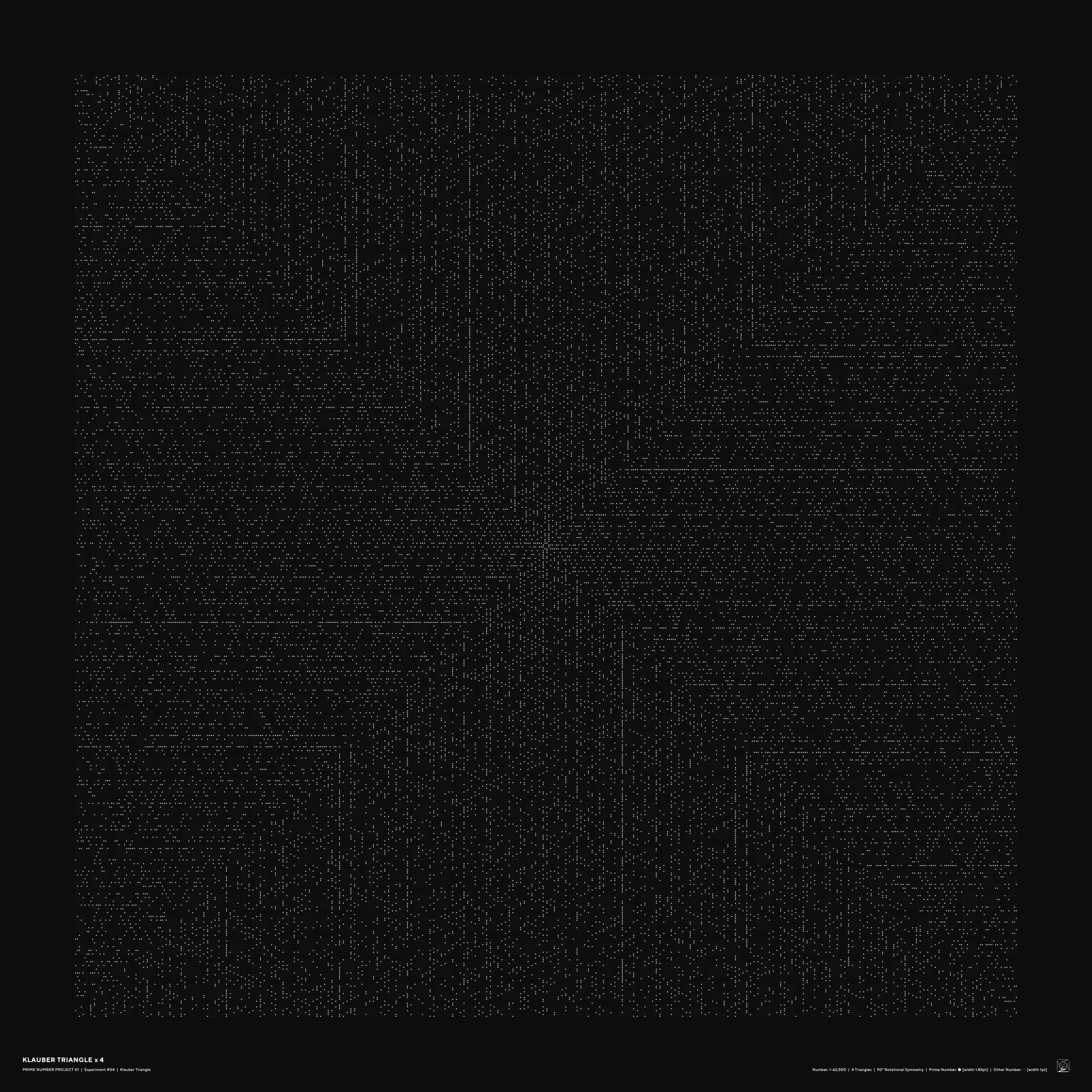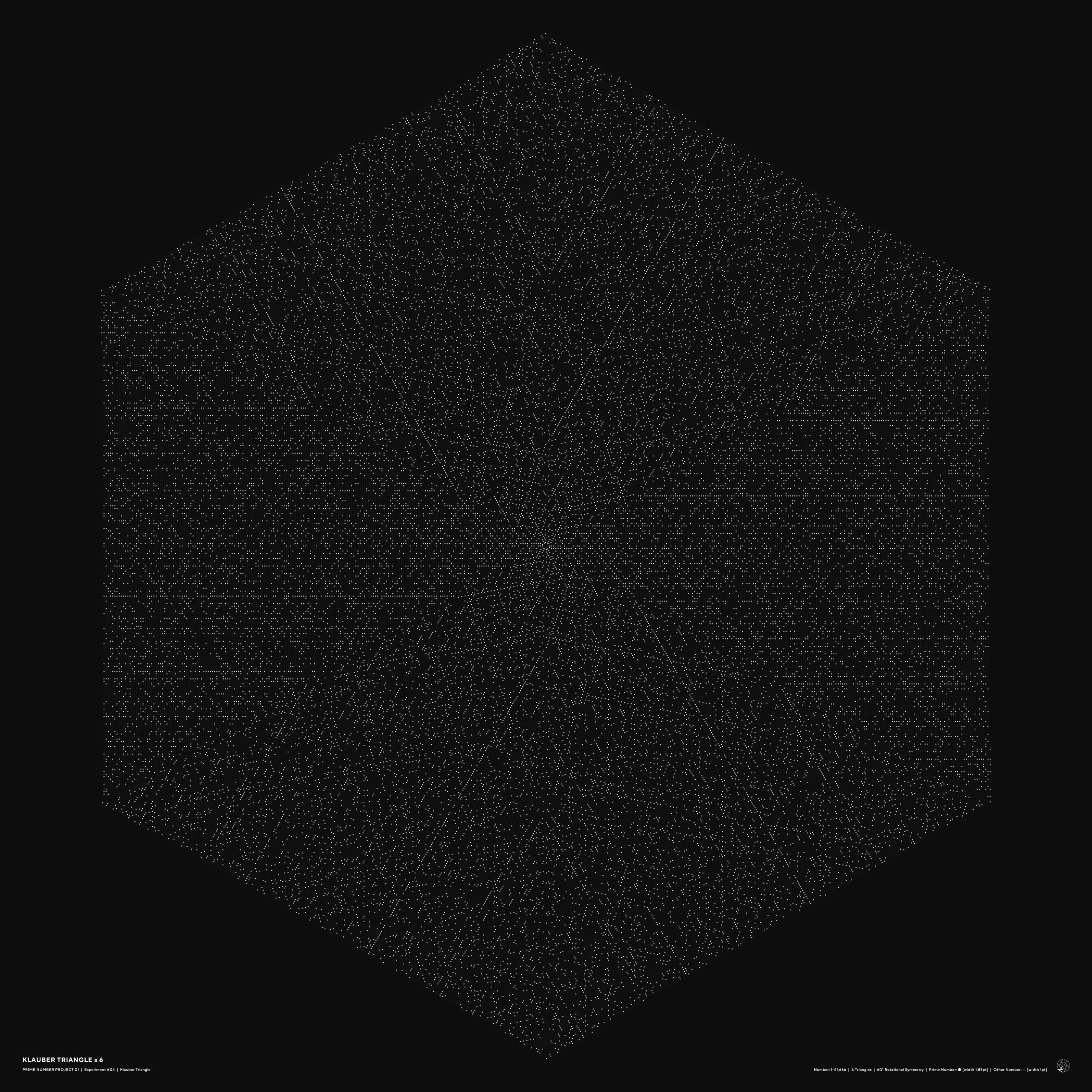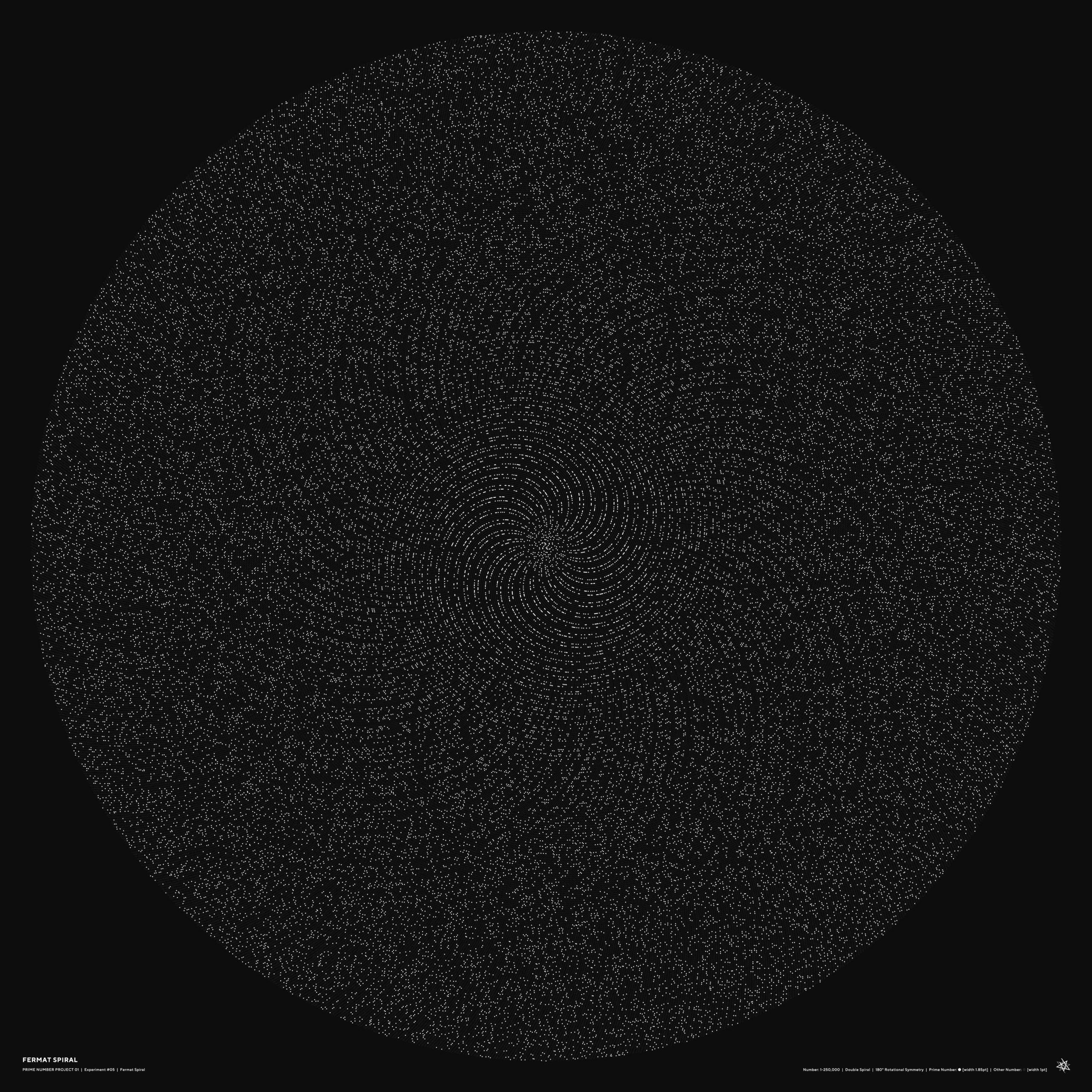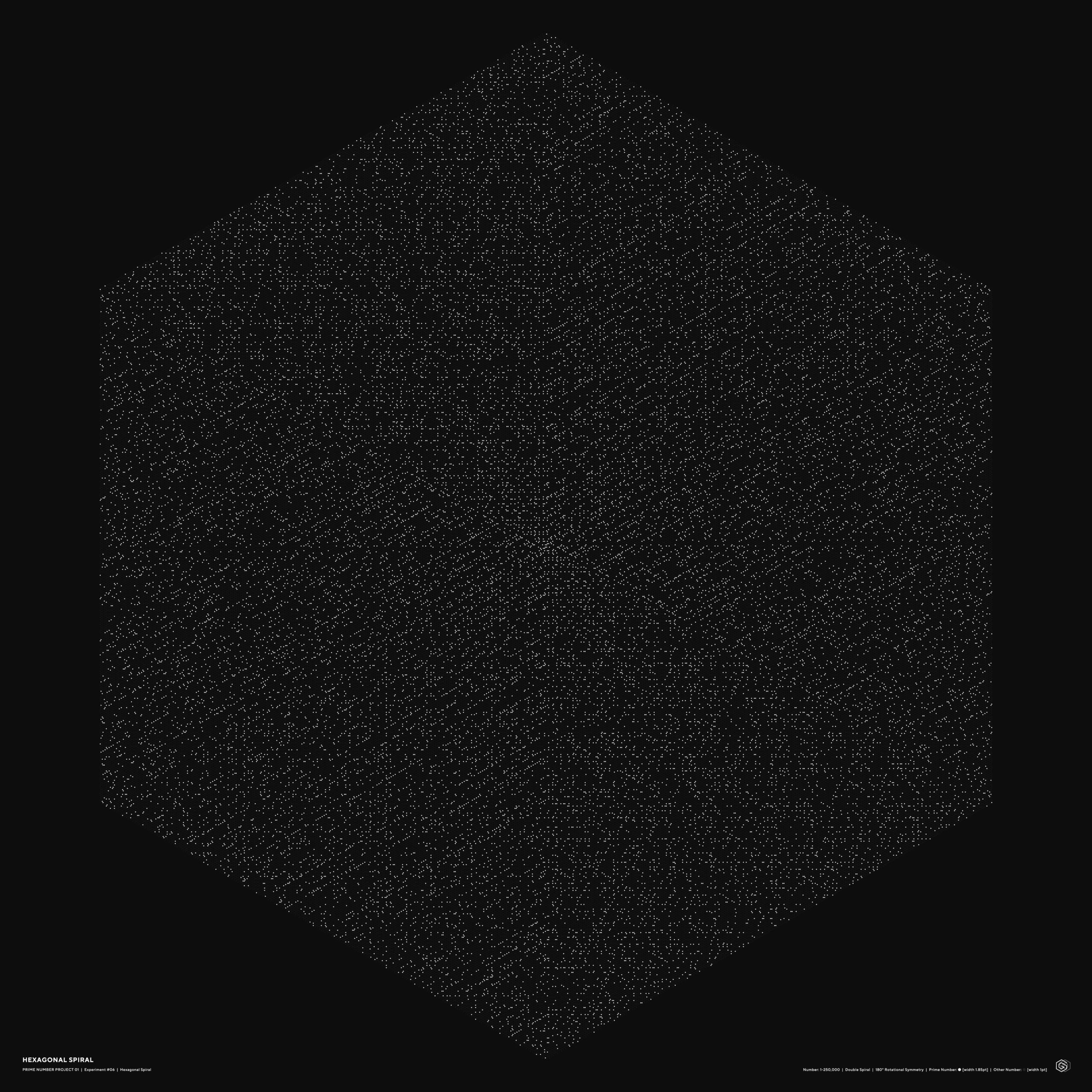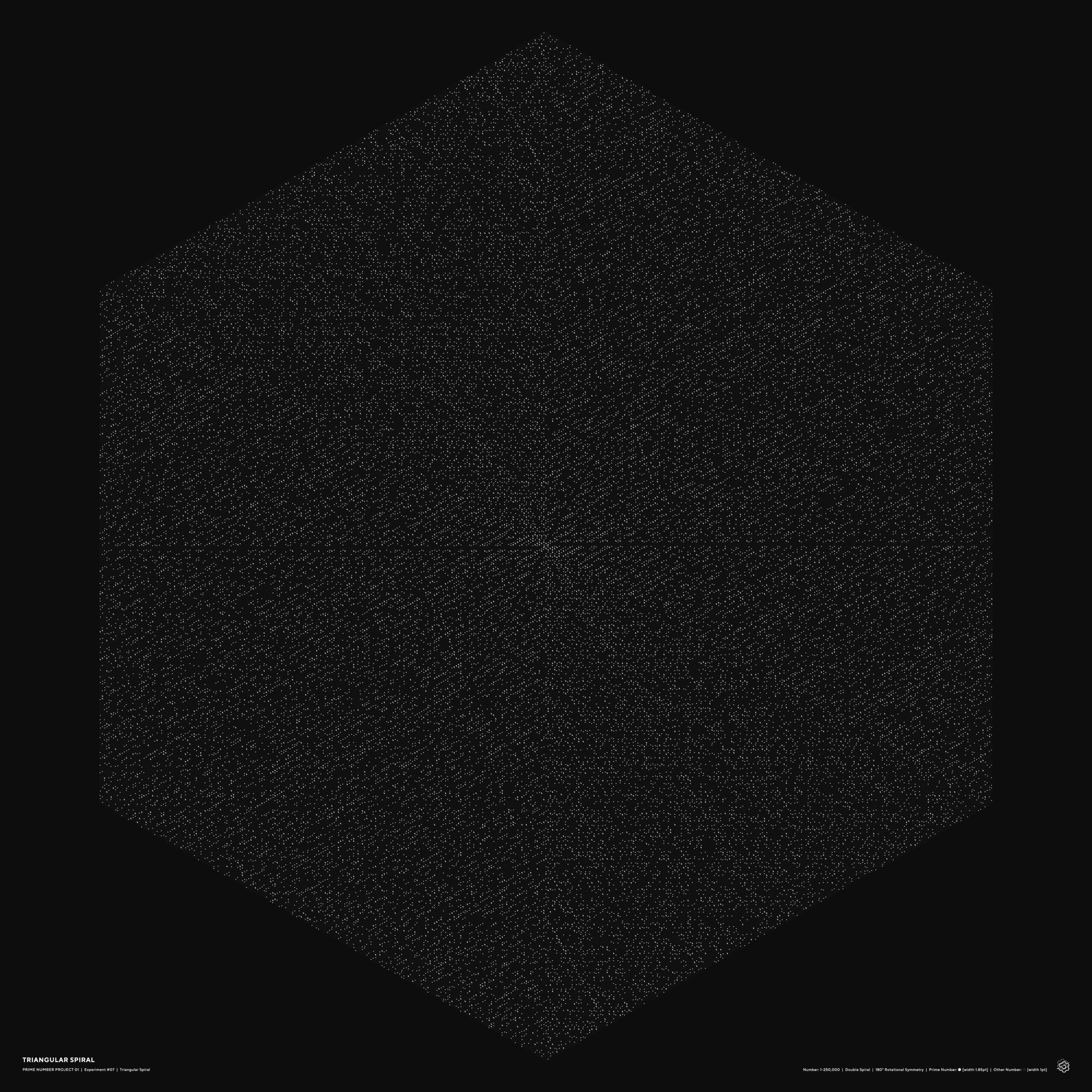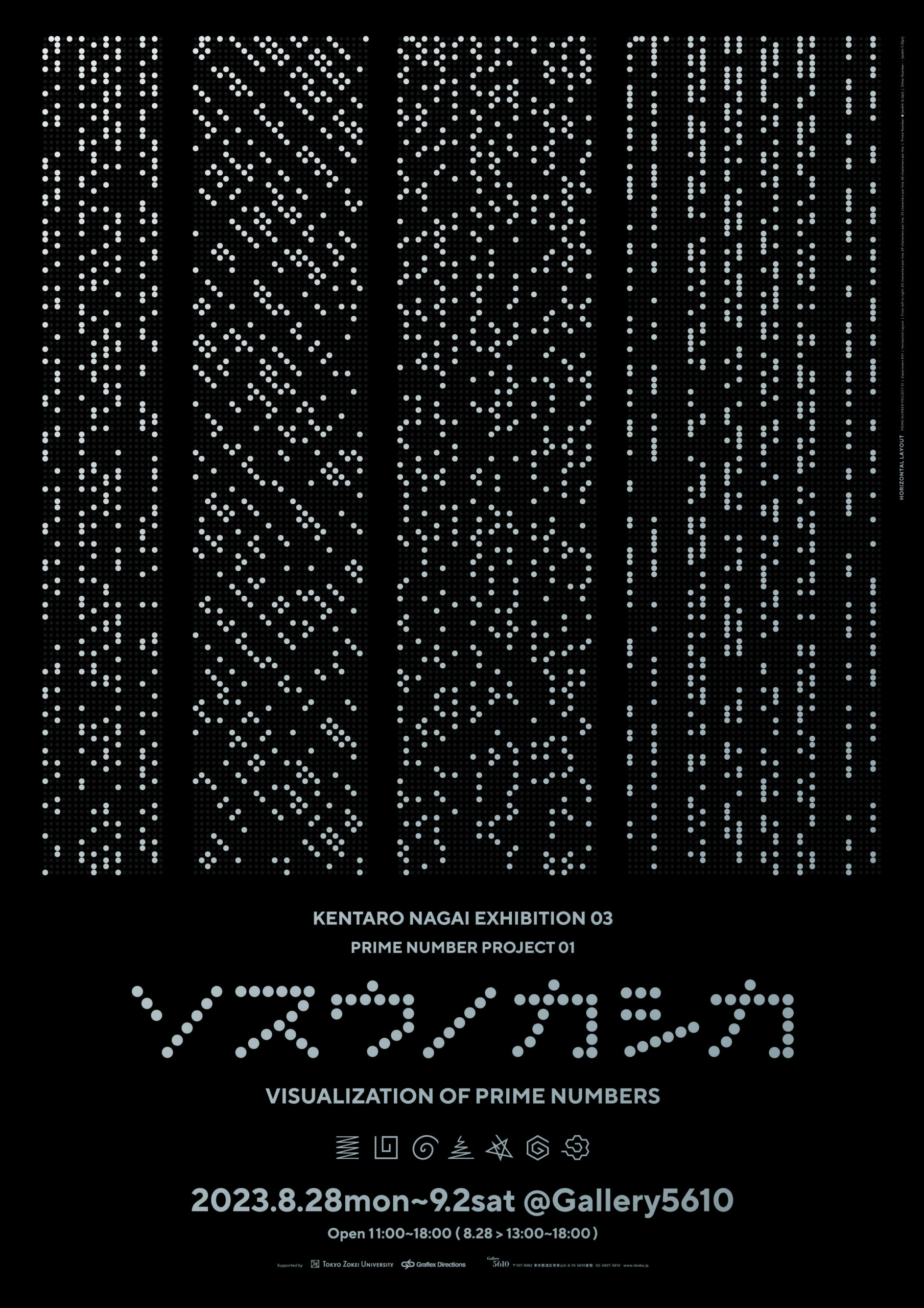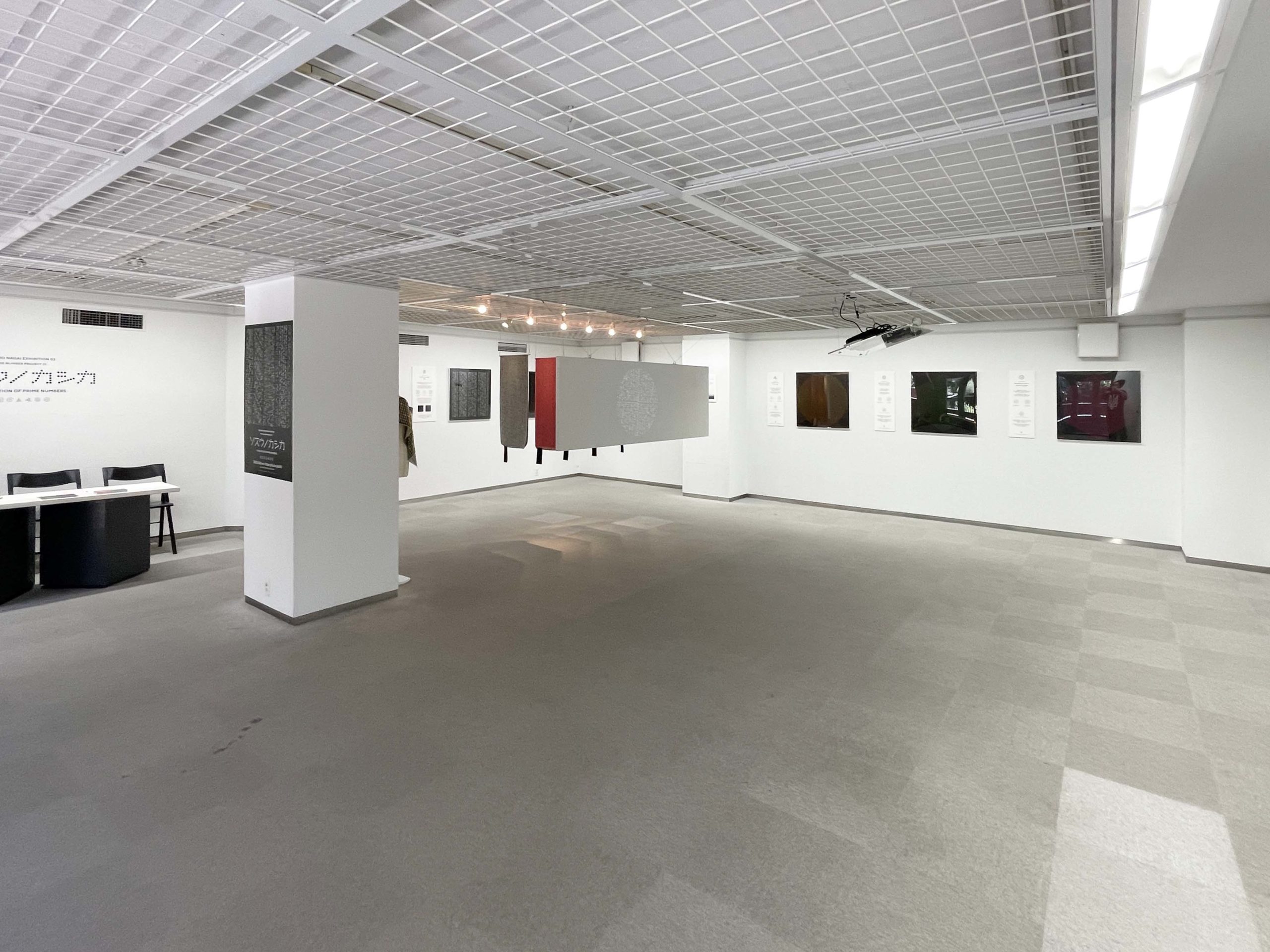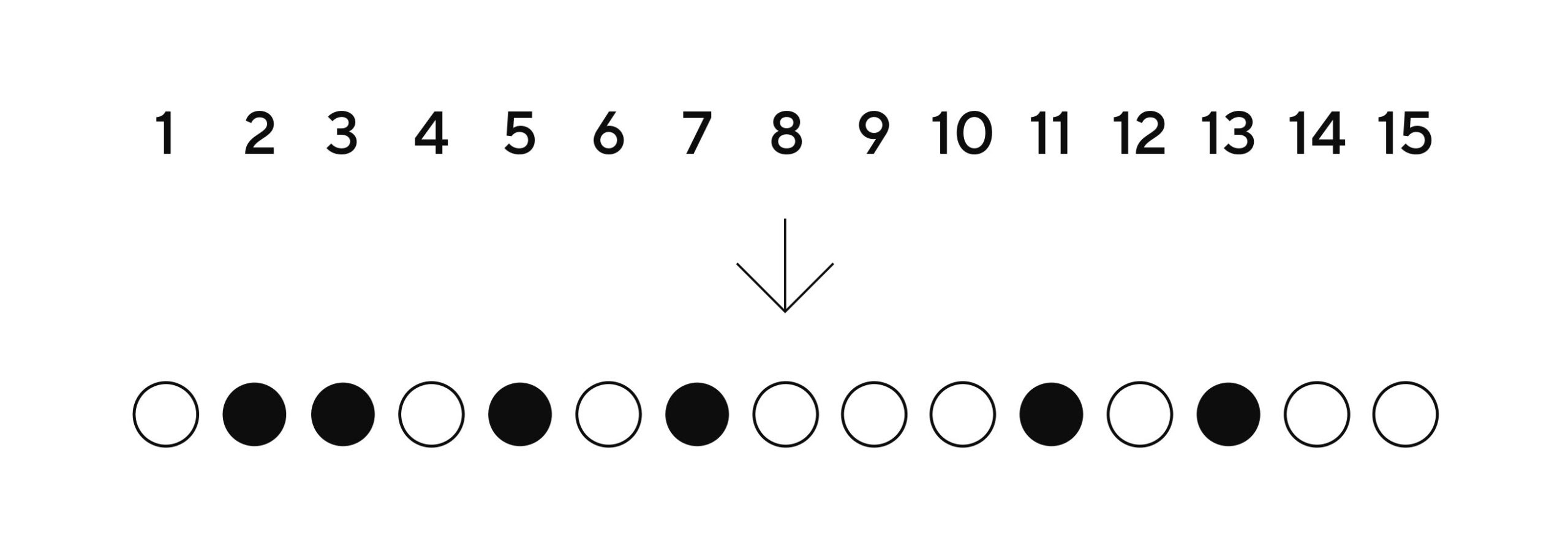01
ソスウ/カシカ
VISUALIZATION OF PRIME NUMBERS
CONCEPT
Prime numbers appear randomly among integers.
Does the sequence of prime numbers have a meaning?
Numerous mathematicians have studied this question.
Leonhard Euler derived the relationship between prime numbers and pi through the zeta function, and Carl Friedrich Gauss used the natural logarithm to show the distribution of prime numbers.
Later, Bernhard Riemann predicted that the zeros of the zeta function would lie on a straight line.
This conjecture, known as the “Riemann hypothesis,” is an important conjecture that solves the mystery of the regularity of prime numbers, but it remains unresolved to this day.
The idea for this project was born from the thought that there might be room in the field of graphic design to explore something about the mysteriousness of the sequence of prime numbers.
And this project aims to discover the visual beauty of the arrangement of prime numbers and to explore their laws by symbolizing prime numbers and visualizing them using graphic design techniques (DTP, etc.).
素数は整数の中でランダムに現れる。素数の並びに意味はあるか? それについて数々の数学者が研究を行ってきた。レオンハルト・オイラーはゼータ関数を通じて素数と円周率との関わりを導き出し、カール・フリードリヒ・ガウスは素数分布の様子を自然対数を使って明らかにした。その後、ベルンハルト・リーマンは、ゼータ関数の零点が直線上に並ぶことを予想した。「リーマン予想」と呼ばれるこの予想は、素数の規則性の謎を解き明かす重要な予想であるが、現在も解決はされていない。
素数の並びの不可思議さに対してグラフィックデザインの分野から何か探究できる余地があるのではないか、というのが本プロジェクトの着想の発端であり、このプロジェクトは素数を記号化し、グラフィックデザインの手法(DTP等)を用いて素数を視覚化することで、素数の配置が持っているかもしれない視覚的な美しさを見出だすこと、またその法則性を探究することを目的としている。
CHALLENGE
I started by converting prime numbers into symbols, such as “●” and other natural numbers into “○,” and then using Illustrator and InDesign, I poured them into various shapes, such as horizontal layout and spirals.
After that, I reached the limits of the software, so I expressed it using a program (Seven different experiments were conducted).
手法としては、素数を「●」、それ以外の自然数を「○」と、記号に変換し、IllustratorやInDesignを用いて箱組み、螺旋など、様々な形に流し込むところからスタートしている。その後数を増やしていったところ、DTPソフトの限界が判明したため、プログラムを用いて視覚化することにした。
FEATURES
These works are that the same spiral is copied and rotated 180 degrees to create a double spiral (Excludes HORIZONTAL LAYOUT). This stems from the emergence of a language common to the world of art, known as “beauty,” in the realm of physics. Inspired by the concept of “symmetry” used in the Dirac equation by physicist Paul Dirac, who seemed to hold an artistic notion that physical laws must be mathematically beautiful. The criterion for this beauty is “symmetry,” and Dirac successfully explained the properties of fundamental particles of matter such as electrons, neutrinos, and quarks using the Dirac equation, which possesses three symmetries. Upon learning this, there was an intuitive sense that incorporating symmetry into visualizing prime numbers could differentiate them from existing visualization works. Hence, for the spiral artwork, a structure of dual spirals with rotational symmetry of 180 degrees was adopted.
特徴としては同じものをコピーして180度回転することで二重螺旋にしていることである(HORIZONTAL LAYOUT除く)。これは、物理学の世界において、「美しさ」というアートの世界と共通する言語が出てくることに起因している。 物理学者のポール・ディラックがディラック方程式で用いた「対称性」からヒントを得たのであるが、ディラックは物理法則は数学的に 美しくなければならない、という芸術表現に近い考え方を持っていたらしい。その美しさの基準が「対称性」であり、 電子やニュートリノ、クォークなど物質の基本素粒子の性質を、三つの対称性を持つディラック方程式で説明することに成功した。 それを知った時、素数を視覚化することにおいて、対称性を取り入れることで既存の視覚化作品との差別化につながるのではないか、 ということを直感的に感じたのである。そこで、螺旋作品については180°の回転対称性を持つ二重螺旋の構造にした。
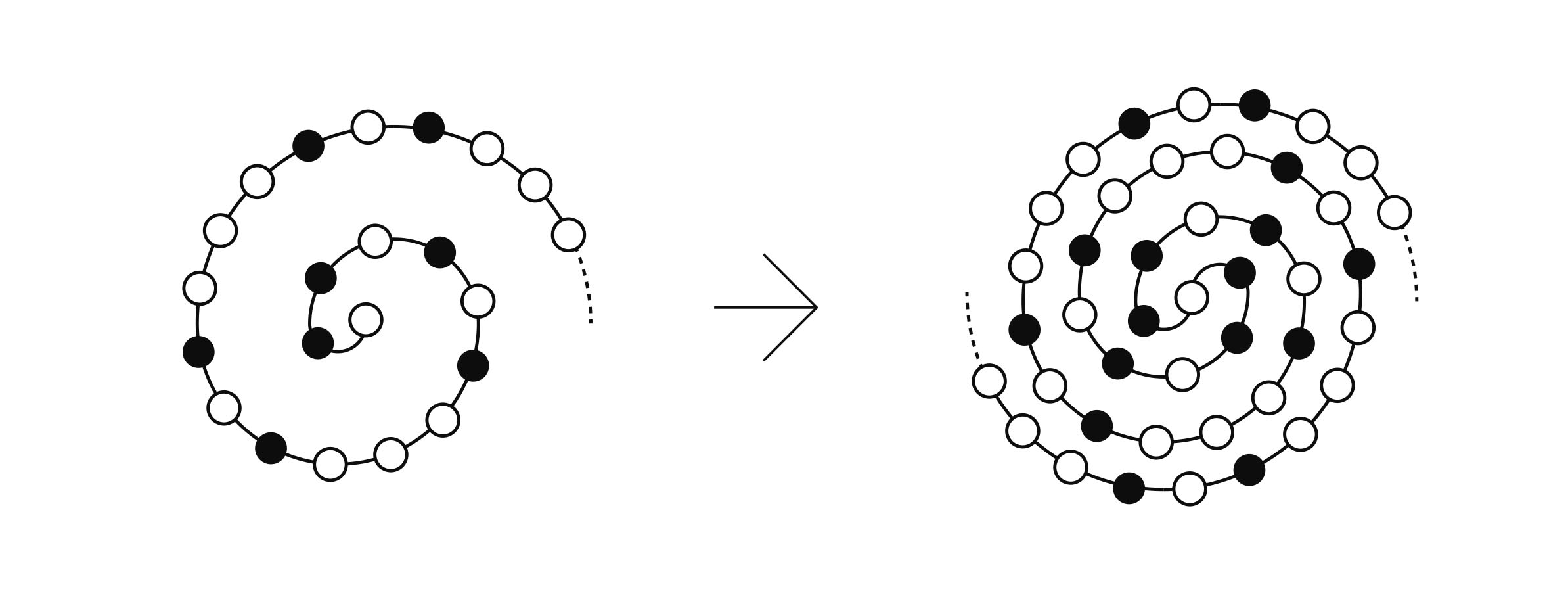
EXHIBITION
These works were presented as 14 posters in my solo exhibition held @Gallery 5610 from August 28 to September 2, 2023.
これらの作品は2023年の8月28日から9月2日にギャラリー5610で開催した個展で、14点のポスター作品として発表した。
PROGRAMING
Tatsuki HAYAMA (Mathematician)
PRINTING
SHOEI Inc.
SUPPORT
Tokyo Zokei University
